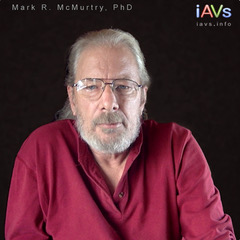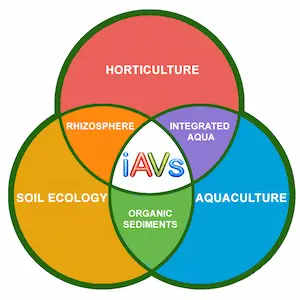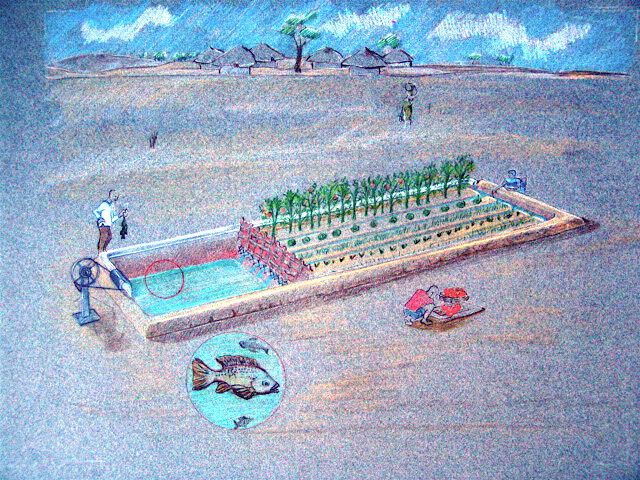By the end of this brief tour, you will be able to:
- appreciate that iAVs is the integration of horticulture, soil ecology and aquaculture.
- appreciate that iAVs has a proud heritage…one that is based on science.
- meet the people behind iAVs.
- understand what drives us…our vision!
- read journal and magazine articles relating to iAVs.
Welcome to iAVs.
iAVs
- Is a symbiotic polyculture – it’s the integration of horticulture and aquaculture.
- Produces food using the metabolic wastes of fish.
- Produces more food for less water.
- Produces clean fresh organic food – anywhere.
- Produces a wide variety of food crops – in any season.
- Allows food production without harm to the planet.
- Infinitely scalable from one to a million square meters.
- Is easy to build and simple to operate.
How It All Started
iAVs had its genesis in the mid-1980s when a product design student at North Carolina State University demonstrated the ‘closed loop’ production of fruit and vegetables using nothing more than the metabolic wastes of freshwater fish.
His peer-reviewed research resulted in the Integrated Aqua-Vegeculture System (iAVs) and enabled its inventor Dr Mark R McMurtry to realize a personal goal – to devise a means by which impoverished villagers could derive their nutrition without harming their environment.
Our Vision
We remain committed to the original premise behind iAVs…to provide impoverished people with the means to grow their own nutritious food without damage to the planet.
Climate change, the pandemic and ongoing conflict, however, are creating food quality and security issues for everyone! Everywhere!
With that in mind, we offer the method to anyone who would like to grow their own clean fresh organic fruit and vegetables – regardless of scale.
Meet your Hosts

Mark R McMurtry PhD
A scientist and CEA horticulturist – the inventor of iAVs – arguably the most productive, resilient and sustainable food production method ever devised.

Gary Donaldson
An urban farmer with 40 years of experience. He manages this website, washes the dishes and carries the bags.
We make bold claims, so we expect (indeed encourage) skepticism …and we offer the following just so you understand that we can prove what we say about iAVs…and that we didn’t just make it all up!
Scientific Journal and Magazine Articles
Here’s a small sample of the iAVs articles that were published in various journals and farmer/grower magazines.
NCSU ResPersp 7-3 Aquaculture In Greenhouses: Fish and Vegetables Grow Together NCSU Research Perspectives 7:3 (1988).
– Representative photographs from inside 1988-89 Ratio Studies greenhouse with harvest samples
Boone Mora – an article on the iAVs USDA commercial trial conducted by Mora/Garrett.
American Vegetable Grower magazine article about iAVs, titled “Fish Increase Greenhouse Profits”. by Douglas C. Sanders, Feb. 1988.
Intl Ag-Sieve “Aqua-Vegeculture Systems”, Rodale Institute, International Ag-Sieve, Vol 1(3).
Peer-Reviewed Publication Citations
McMurtry, M.R., D.C. Sanders, J. Cure, R.G. Hodson, B.C. Haning and P.C. St. Amand. 1997a. The efficiency of Water Use of an Integrated Fish/Vegetable Co-Culture System. J. World Aquaculture Society. 28 (4):
McMurtry, M.R., R.G. Hodson, D.C. Sanders and J. Cure. 1997 b. Effects of Biofilter / Rearing Tank Volume Ratios on Productivity of a Recirculating Fish/Vegetable Co-Culture System. J. of Applied Aquaculture. 7(4): 33-51.
McMurtry, M.R., D.C. Sanders, P.V. Nelson and A. Nash. 1993 a. Mineral nutrient concentration and uptake of tomato irrigated with recirculating aquaculture water as influenced by the quantity of fish waste products supplied. J. Plant Nutrition Vol. 16 (3), pp. 407-419.
McMurtry, M.R., D.C. Sanders, R.P. Patterson and A. Nash. 1993 b. The yield of tomato irrigated with recirculatory aquaculture water. J. Production Agriculture., Vol.6, no. 3, pp. 331-2, 428-432.
McMurtry, M.R., P.V. Nelson, D.C. Sanders and L. Hodges. 1990 a. Sand culture of vegetables using recirculating aqua cultural effluents. J. of Applied Agricultural Research; Vol. 5, No. 4, pp. 280-284.
McMurtry, M.R., D.C. Sanders, B.C. Haning, and P.C. St. Amand., submitted 1990, 1994. Food Value, Water Use Efficiency, and Economic Productivity of an Integrated Aquaculture-Olericulture System as Influenced by Tank to Biofilter Ratio. HortTech [submitted twice, not published, claimed to be aquaculture and not horticulture).
McMurtry, M.R., D.C. Sanders, P.V. Nelson and R.G. Hodson. 1990 c. Nutrient dynamics in an integrated recirculatory aquaculture-vegetable production system. Proc. XXIIIrd International Horticultural Congress, Florence, Italy. Aug 27 -Sept. 1.
McMurtry, M.R., P.V. Nelson, and D.C. Sanders. 1987. Mineral Content and Yield of Bush Bean, Cucumber, and Tomato [et al] Cultivated in Sand and Irrigated with Recirculating Aquaculture Water. North Carolina Agricultural Research Service., No. 11019 (1987).
McMurtry, M.R., D.C. Sanders. September 1990. HortScience 25(9) Performance of an Integrated Aquaculture-Olericulture System as influenced by component ratio.
McMurtry, M. R., R. G. Hodson, and D. C. Sanders. “Water Quality Maintenance and Mineral Assimilation by Plants Influence Growth of Hybrid Tilapia in Culture with Vegetable Crops.” Trans. Amer. Fishcries Soc.(submitted) (1990).
No scientific investigation is done in isolation, and iAVs was fortunate in that its investigative team and the advisory body consisted of people who were at the top of their professional careers.
Here is a link to learn more about the iAVs Research Group.
Here is a link to a summary about iAVs written by H. Douglas Gross, Prof. Emeritus, NCSU Office of International Programs, 1988.

